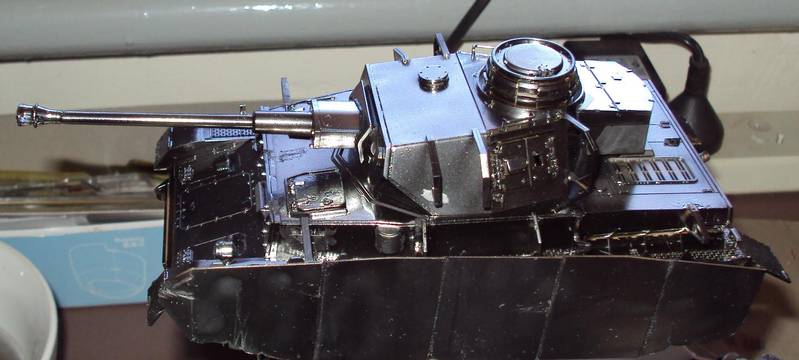A little overdone for my taste perhaps but a more advanced first effort than most. As above,the gouge and scratch detail on the front would be logically vertical from breaching walls,stumps,etc. The transition from healthy,dirty paint to worn,bright metal is too severe and not all in likely locations.
Researching more period photos as well as more experianced builds of armor will give you a better feel for how much weathering and where it's located on the subject.
Less is more. It's easier to add more weathering than remove it. Better to do it over multiple sessions and moods than one event so you can have more control and objective thought on it.
Severe weathering as in detroyed hulks/combat losses are probably the very hardest to depict in a realistic manner and very few of us accomplish it.
Hope this helps in some way. Keep going and.....
Model On!
Rick







































